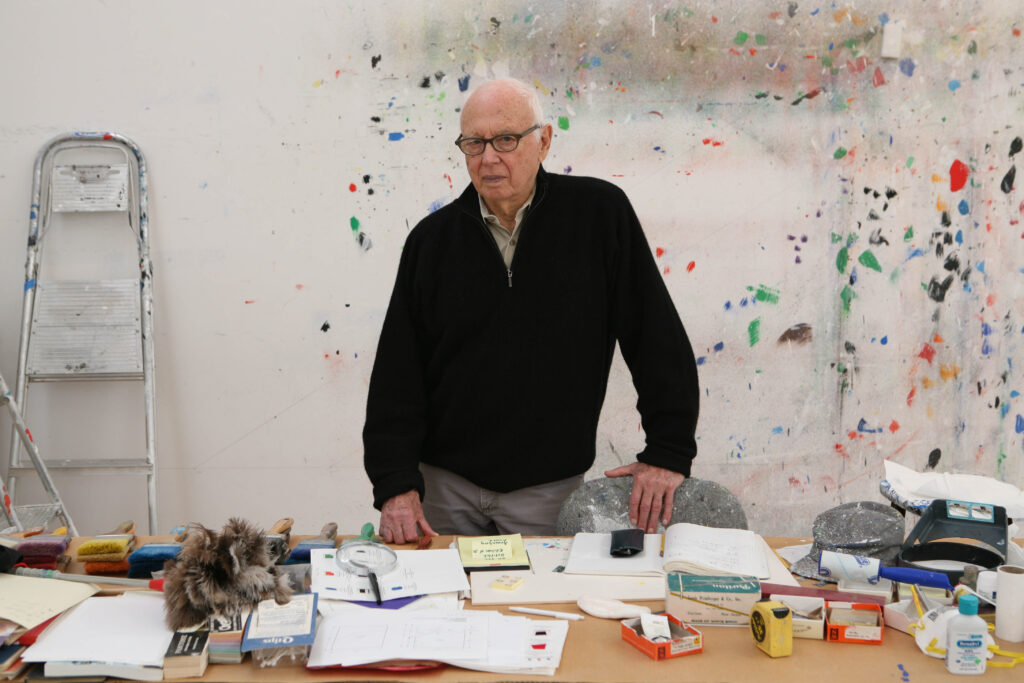Ellsworth Kelly
American
1923, Newburgh, New York
2015, Spencertown, New York

Ellsworth Kelly, 2009; photo: © Jack Shear
American
1923, Newburgh, New York
2015, Spencertown, New York

Ellsworth Kelly, 2009; photo: © Jack Shear
After early artistic training in New York and Boston and military service in World War II, Ellsworth Kelly spent a formative period in France from 1948 to 1954. It was there that he developed his characteristic work. These abstractions drastically reduce glimpsed details of the world into the sparest of arrangements. The resulting forms are neither representational nor precisely geometric. He also explored chance as a compositional technique, and eliminated any visible brushwork from his solid color fields.
Kelly returned to New York City in 1954, then relocated to upstate New York sixteen years later. He eventually did away with the traditional square-canvas format altogether, in favor of joined, shaped canvases. These later works, which neither occupy volume nor hang flat against the wall, exist somewhere between painting and sculpture.
Please note that artwork locations are subject to change, and not all works are on view at all times. If you are planning a visit to SFMOMA to see a specific work of art, we suggest you contact us at collections@sfmoma.org to confirm it will be on view.
Only a portion of SFMOMA's collection is currently online, and the information presented here is subject to revision. Please contact us at collections@sfmoma.org to verify collection holdings and artwork information. If you are interested in receiving a high resolution image of an artwork for educational, scholarly, or publication purposes, please contact us at copyright@sfmoma.org.
This resource is for educational use and its contents may not be reproduced without permission. Please review our Terms of Use for more information.